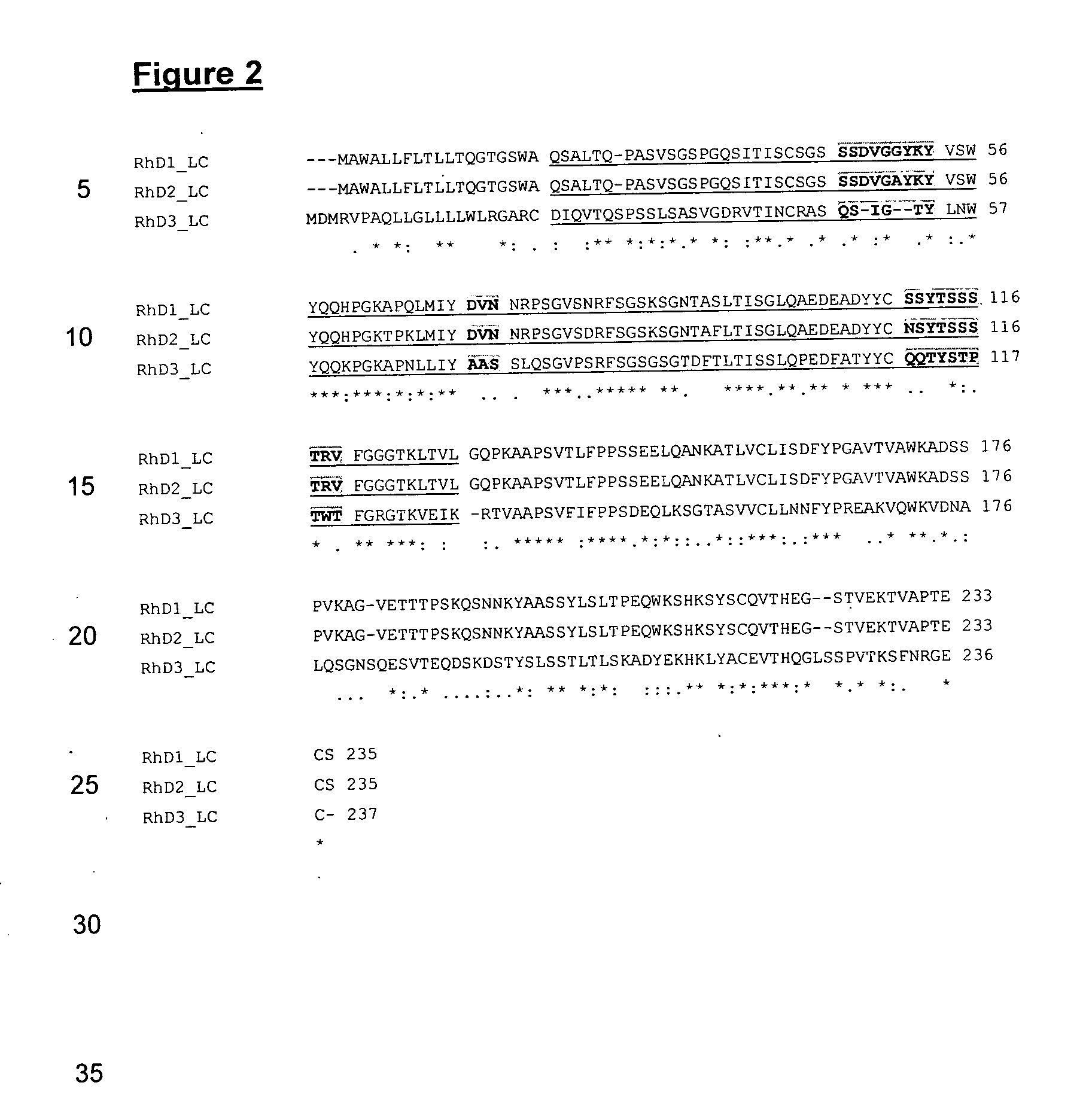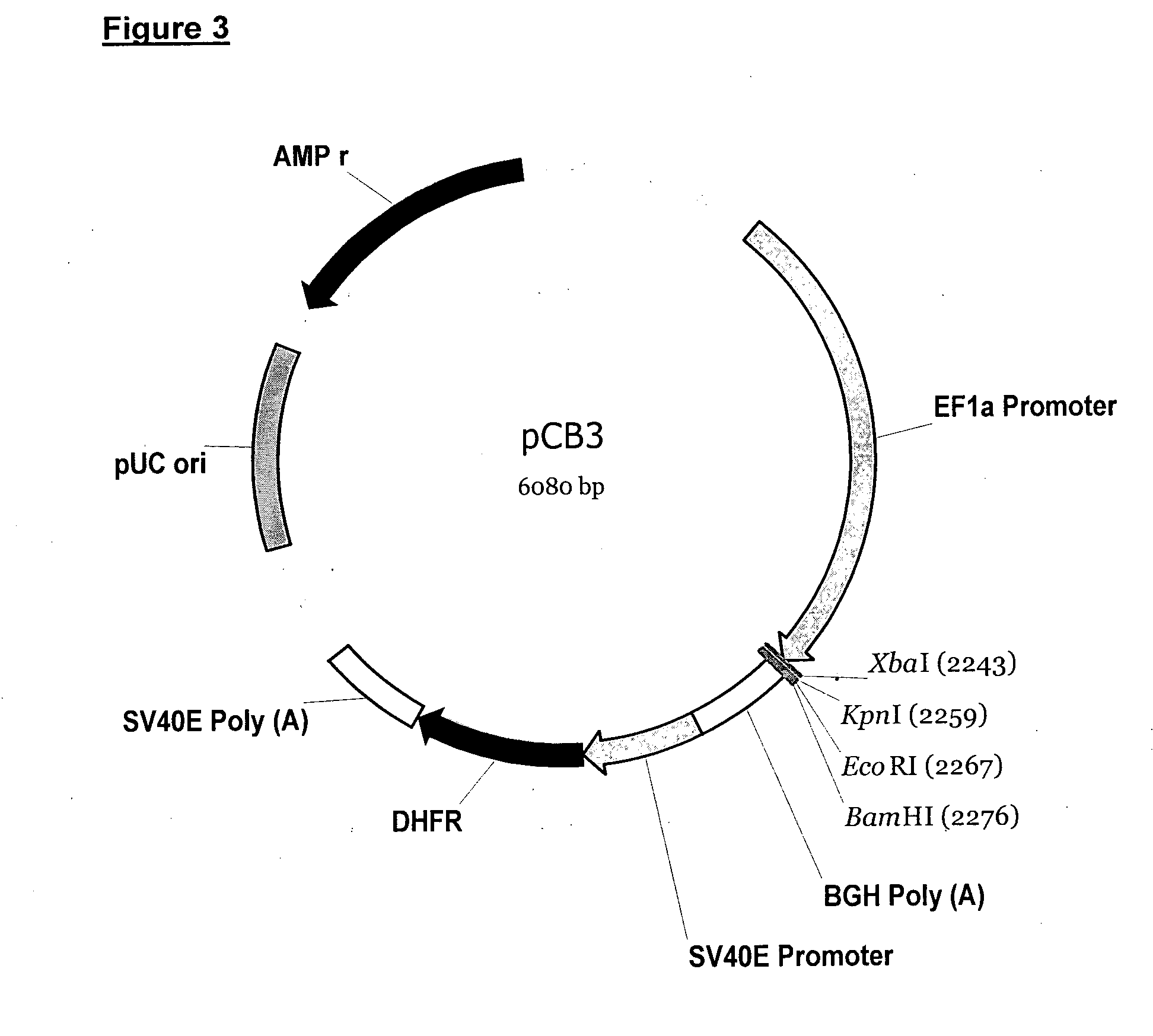Anti-rhd monoclonal antibodies
a monoclonal antibody and antibody technology, applied in the field of production, can solve the problems of sensitisation (immunization), risk of contamination of antibody preparation with viruses or other pathogens that may be present in the blood of donors,
- Summary
- Abstract
- Description
- Claims
- Application Information
AI Technical Summary
Benefits of technology
Problems solved by technology
Method used
Image
Examples
examples
Isolation of Peripheral Blood Mononuclear Cells (PBMCs) and B Cells from Peripheral Blood of Healthy Volunteers Hyperimmunized with Rhesus D (RhD)-Positive Red Blood Cells
[0067]Blood from healthy RhD-negative volunteers repeatedly immunized with red blood cells isolated from healthy RhD-positive individuals of the same ABO blood group was sourced from Cliniqa. Within four weeks after the last immunization the anti-RhD titer in serum was checked, the volunteers were bled, their peripheral blood mononuclear cells (PBMCs) were separated from other blood cell populations by Ficoll-Hypaque (Pharmacia) gradient centrifugation, and the cells were either used fresh or cryopreserved for later use. T cells were routinely depleted by rosetting with 2% S-(2-Aminoethyl)isothiouronium bromide hydrobromide (AET)-treated sheep red blood cells and the resulting enriched B cells were transformed by Epstein-Barr virus (EBV).
EBV Transformation
[0068]Since EBV activation has been shown to be advantageous...
PUM
| Property | Measurement | Unit |
|---|---|---|
| Fraction | aaaaa | aaaaa |
| Fraction | aaaaa | aaaaa |
| Fraction | aaaaa | aaaaa |
Abstract
Description
Claims
Application Information
 Login to View More
Login to View More - R&D
- Intellectual Property
- Life Sciences
- Materials
- Tech Scout
- Unparalleled Data Quality
- Higher Quality Content
- 60% Fewer Hallucinations
Browse by: Latest US Patents, China's latest patents, Technical Efficacy Thesaurus, Application Domain, Technology Topic, Popular Technical Reports.
© 2025 PatSnap. All rights reserved.Legal|Privacy policy|Modern Slavery Act Transparency Statement|Sitemap|About US| Contact US: help@patsnap.com



